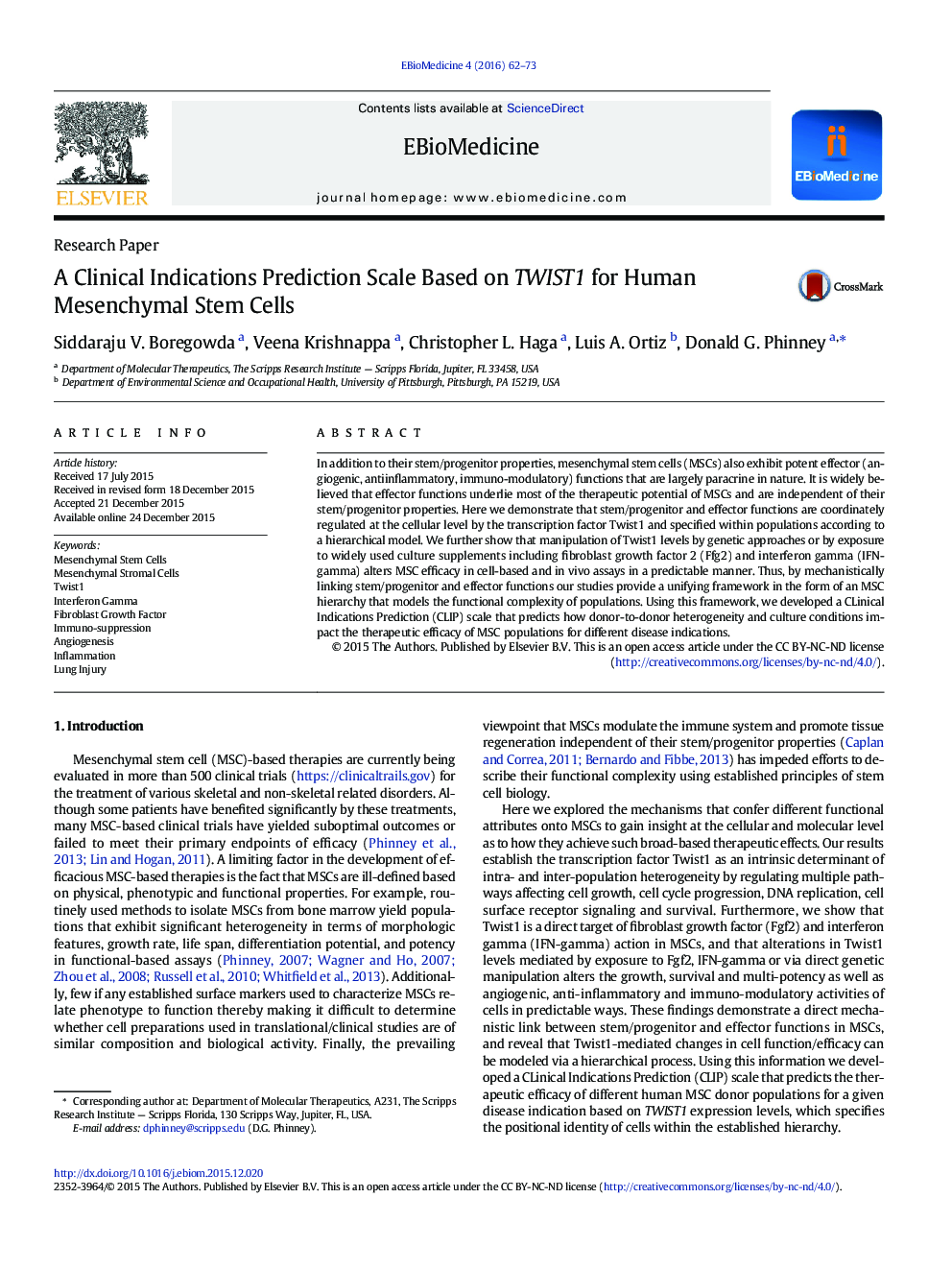| Article ID | Journal | Published Year | Pages | File Type |
|---|---|---|---|---|
| 2120795 | EBioMedicine | 2016 | 12 Pages |
•Mesenchymal stem cells exhibit stem/progenitor and effector (angiogenic, anti-inflammatory, immuno-modulatory) functions.•Twist1 coordinately regulates stem/progenitor and effector functions, which are specified hierarchically in populations.•Twist1 levels predict inter-population differences in therapeutic efficacy of mesenchymal stem cells for different disease indications.Mesenchymal stem cells are being evaluated in human clinical trials for treating ischemic, inflammatory, and immunological diseases. However, most completed trials have yielded suboptimal outcomes due to the inability to predict the potency of different donor populations, which are functionally heterogeneous. We demonstrate that clinically relevant biological activities of MSCs are coordinately regulated by the transcription factor Twist1. Furthermore, we showed that TWIST1 levels reliably predict differences in the angiogenic, anti-inflammatory, and immuno-modulatory activity of populations and as such used it to develop a Clinical Indications Prediction (CLIP) scale. By predicting potency of MSC populations for different disease indications the CLIP scale is expected to dramatically improve MSC-based clinical trial outcomes.
In addition to their stem/progenitor properties, mesenchymal stem cells (MSCs) also exhibit potent effector (angiogenic, antiinflammatory, immuno-modulatory) functions that are largely paracrine in nature. It is widely believed that effector functions underlie most of the therapeutic potential of MSCs and are independent of their stem/progenitor properties. Here we demonstrate that stem/progenitor and effector functions are coordinately regulated at the cellular level by the transcription factor Twist1 and specified within populations according to a hierarchical model. We further show that manipulation of Twist1 levels by genetic approaches or by exposure to widely used culture supplements including fibroblast growth factor 2 (Ffg2) and interferon gamma (IFN-gamma) alters MSC efficacy in cell-based and in vivo assays in a predictable manner. Thus, by mechanistically linking stem/progenitor and effector functions our studies provide a unifying framework in the form of an MSC hierarchy that models the functional complexity of populations. Using this framework, we developed a CLinical Indications Prediction (CLIP) scale that predicts how donor-to-donor heterogeneity and culture conditions impact the therapeutic efficacy of MSC populations for different disease indications.
Graphical AbstractFigure optionsDownload full-size imageDownload as PowerPoint slide
